|
Here are the pioneers of the American auto industry.
Also included are the European inventors of the first engines and self-propelled passenger vehicles.
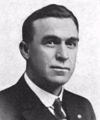 |
|
Edgar Apperson
On July 4, 1894, Edgar Apperson drove his first car, manufactured on assignment for Elwood Haynes, with whom he and his (more)
|
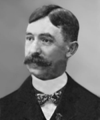 |
|
Elmer Apperson
Elmer Apperson collaborated with brother Edgar on the manufacture of Elwood Haynes’ first car. He was a partner in both the (more)
|
 |
|
Stephen Balzer
In 1894, Stephen M. Balzer built one of the first automobiles in the United States. Measuring six feet long and three feet (more)
|
 |
|
Vincent Bendix
In 1907 Vincent Bendix organized an auto firm, and sold some 7,000 Bendix motor buggies before the company failed. Bendix (more)
|
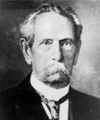 |
|
Karl Friedrich Benz
In 1885, German mechanical engineer Karl Benz perfected a two-cycle, benzol-powered engine which he installed and drove (more)
|
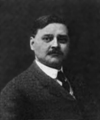 |
|
Benjamin Briscoe
Benjamin Briscoe founded the Briscoe Manufacturing Company in 1887. In 1903 he joined with Jonathan Maxwell to form the (more)
|
 |
|
Frank Briscoe
Frank Briscoe was the founder and president of Brush Runabout Company. He also connected with brother Benjamin with the (more)
|
 |
|
Alanson P. Brush
In 1899, Alanson P. Brush joined the firm of Leland and Faulconer, supplier of engines to Oldsmobile. Brush made (more)
|
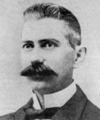 |
|
David Dunbar Buick
David Dunbar Buick was instrumental in devising a technique for applying enamel to cast iron. Using the money he received (more)
|
 |
|
Hugh Chalmers
Hugh Chalmers worked for National Cash Register from the time he was 14. He rose to vice president before he was 30 and in (more)
|
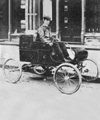 |
|
Roy D. Chapin
Roy D. Chapin first worked for Ransom E. Olds as a photographer and gear filer. While still in Olds’ employ, he drove a 1901 (more)
|
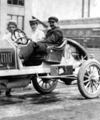 |
|
Louis Chevrolet
Louis Chevrolet came to the United States from Switzerland in 1900 to sell a wine pump he had invented. He drove with his (more)
|
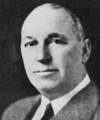 |
|
Walter P. Chrysler
Walter P. Chrysler left his job as works manager for American Locomotive in 1911 to join Buick Motor Company. When he left (more)
|
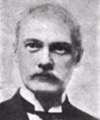 |
|
Charles Clifton
In 1897 Colonel Charles Clifton left Ball, Lewis and Yates Coal Mining Company to become secretary and treasurer for the (more)
|
 |
|
Nicholas Cugnot
Nicolas Joseph Cugnot, a French army engineer, was the first man to sit behind the controls of a self-propelled road (more)
|
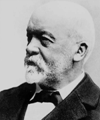 |
|
Wilhelm Gottlieb Daimler
In 1883 Germany’s Gottlieb Daimler, who had joined Nicolas August Otto and Eugen Langen as their designing engineer, was (more)
|
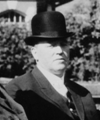 |
|
Horace Dodge
After working as machinists for several companies, John and Horace Dodge developed a ball bearing bicycle and organized the (more)
|
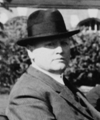 |
|
John Dodge
After working as machinists for several companies, John and Horace Dodge developed a ball bearing bicycle and organized the (more)
|
 |
|
Frederic Samuel Duesenberg
By 1902 Frederick Samuel Duesenberg's racing experience had won him a position as test driver for the Rambler Company. In (more)
|
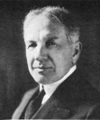 |
|
William C. Durant
At 25, William Crapo Durant teamed with Dallas Dort to form the Durant-Dort Carriage Company, manufacturers of two-wheeled (more)
|
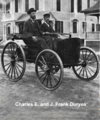 |
|
Charles E. Duryea
Brothers Charles E. and J. Frank Duryea are generally given credit for operating (successfully) the first American-made (more)
|
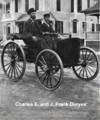 |
|
J. Frank Duryea
Brothers Charles E. and J. Frank Duryea are generally given credit for operating (successfully) the first American-made (more)
|
 |
|
Albert Russel Erskine
Albert Russel Erskine became treasurer of Studebaker in 1910. He became first vice president in 1913, and president in 1915. (more)
|
 |
|
Frederic John Fisher
Eldest of the Fisher brothers, Frederic J. organized the Fisher Body Company in 1908. He served as president and general (more)
|
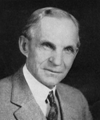 |
|
Henry Ford
As a youngster, Henry Ford showed his mechanical aptitude by constructing a steam engine when he was 15, and became an (more)
|
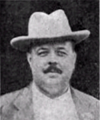 |
|
Charles Jasper Glidden
In 1900 Charles Jasper Glidden retired from active business life, having accumulated a comfortable fortune during his (more)
|
 |
|
Ray A. Graham
Along with brothers Robert C. and Joseph C., Ray A. Graham began in the glass manufacturing business, using machines (more)
|
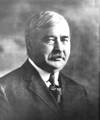 |
|
Elwood Haynes
Elwood G. Haynes' car, among the first built in the United States, was constructed with the aid of the Apperson Brothers and (more)
|
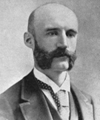 |
|
Joseph Lowthian Hudson
Joseph Lowthian Hudson was born at Newcastle-on-Tyne, England, moved to America as a child, and acquired his educational (more)
|
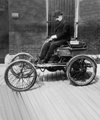 |
|
Thomas B. Jeffery
Thomas B. Jeffery was photographed in the fall of 1897 in the first experimental Rambler, which he built in his father’s (more)
|
 |
|
Edward Ned Jordan
Edward "Ned" Jordan entered the auto industry as advertising manager for the Thomas B. Jeffery Company. Jordan remained with (more)
|
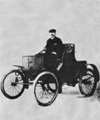 |
|
Henry Bourne Joy
Henry Bourne Joy served as president of the Fort Street Depot Company from 1896 to 1907. While with Fort Street Depot, Joy (more)
|
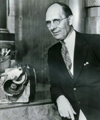 |
|
Charles F. Kettering
Charles F. Kettering began his career as an engineer for National Cash Register. After working at NCR for five years, he (more)
|
 |
|
Charles Brady King
Like Ford, Charles Brady King first became interested in self-propelled vehicles upon seeing one at the 1893 Columbian (more)
|
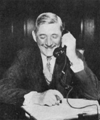 |
|
William S. Knudsen
William S. Knudsen joined the Ford Motor Company in 1912 as manager of the company's 27 plants. During World War I, Knudsen (more)
|
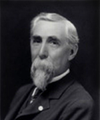 |
|
Henry M. Leland
Henry M. Leland Spent his younger years working in the factories of several well-known firearms manufacturers learning (more)
|
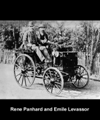 |
|
Emile Levassor
Louis Rene Panhard and Emile Levassor cofounded Panhard et Levassor, a French manufacturer of band saws and woodworking (more)
|
 |
|
Alvan Macauley
Alvan Macauley began his career as a patent attorney, holding various positions with National Cash Register and American (more)
|
 |
|
Howard C. Marmon
Howard C. Marmon worked as an associate with his father in a flour mill machinery business that was eventually absorbed in (more)
|
 |
|
George Walter Mason
George Walter Mason entered the auto industry in 1913 with Studebaker. A year later, he joined Dodge, leaving in 1915 to (more)
|
 |
|
Charles Walter Matheson
With brother Frank, Charles Walter Matheson built the Matheson Six between 1903 and 1913. In 1921, after spending a year as (more)
|
 |
|
Jonathan Dixon Maxwell
Like many other automobile manufacturers, Jonathan Dixon Maxwell got his start in the bicycle business, operating a repair (more)
|
 |
|
Charles Metz
Charles Metz organized the Waltham Manufacturing Company to build bicycles. He was later associated with the Orient Oil (more)
|
 |
|
William Morrison
William Morrison of Des Moines, Iowa, is credited with building the first successful battery-powered electric automobile in (more)
|
 |
|
Edward M. Murphy
Edward M. Murphy's first vocational experiments were found in assisting hardware dealers. His interest in and ability for (more)
|
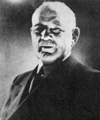 |
|
Charles W. Nash
Charles W. Nash started his career working in the Durant-Dort carriage works, where he developed the straight-line (more)
|
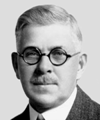 |
|
Ransom E. Olds
After successful experiments with steam vehicles as early as 1886, Ransom E. Olds completed his first gasoline powered (more)
|
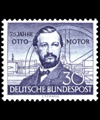 |
|
Nikolaus Augustus Otto
The name most associated with the development of the explosion engine operating on the four-cycle principle and compressing (more)
|
 |
|
James Ward Packard
James Ward Packard organized the Packard Electric Company in 1890. By 1893 Packard had drawn the plans for his first auto, (more)
|
 |
|
Fred O. Paige
Fred 0. Paige organized Paige-Detroit Motor Company in 1909 to produce two-cycle automobiles. Paige was president of the (more)
|
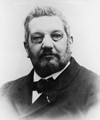 |
|
Rene Panhard
Louis Rene Panhard and Emile Levassor cofounded Panhard et Levassor, a French manufacturer of band saws and woodworking (more)
|
 |
|
George N. Pierce
The man, who gave us the elegant, classic, massive, Pierce-Arrow, George N. Pierce, originally made delicate, gilded bird (more)
|
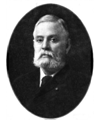 |
|
Albert Augustus Pope
After serving in the Civil War, Albert Augustus Pope organized in 1879 a company to manufacture bicycles, a venture which (more)
|
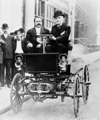 |
|
George B. Selden
A veteran of the Civil War, George Baldwin Selden became a patent attorney in 1871. Having a keen interest in mechanics, (more)
|
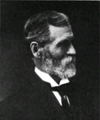 |
|
Francis E. Stanley
In 1893, the twin brothers Francis E. and Freelan O. Stanley invented the Stanley dry plate process which revolutionized (more)
|
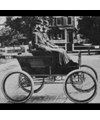 |
|
Freelan O. Stanley
In 1893, the twin brothers Francis E. and Freelan O. Stanley invented the Stanley dry plate process which revolutionized (more)
|
 |
|
John Mohler Studebaker
In 1858 John Mohler Studebaker bought brother Henry's share of the Studebaker Brothers (Wagon) Company which then became the (more)
|
 |
|
Henry C. Stutz
After winning recognition among the early auto manufacturers with the invention of an improved rear axle, Harry C. Stutz (more)
|
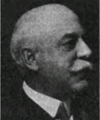 |
|
Edwin Ross Thomas
Edwin Ross Thomas started the E. R. Thomas Motor Company of Buffalo in 1900. The company was quite successful, and Thomas (more)
|
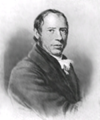 |
|
Richard Trevithick
Richard Trevithick is given credit for the first self-propelled road passenger vehicle as well as the first full-scale (more)
|
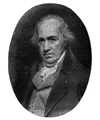 |
|
James Watt
James Watt was a Scottish inventor and mechanical engineer who is best known for perfecting the steam engine in 1755. In (more)
|
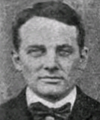 |
|
Walter C. White
Walter C. White began his career working in the White Sewing Machine Company factory, owned by his father. It was here that (more)
|
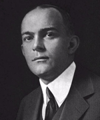 |
|
Childe Harold Wills
Childe Harold Wills spent the years 1900-1903 working for the Boyer Machine Company and nights as a draftsman for Henry (more)
|
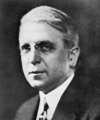 |
|
John North Willys
In 1906 John North Willys organized the American Motor Car Sales Company to sell the entire output of the Overland Company. (more)
|
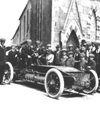 |
|
Alexander Winton
Alexander Winton started the Winton Bicycle Company in 1890, ten years after his arrival in the United States. In 1896 (more)
|
|
|
| Click on any item below for more details at Amazon.com |
|

|

|
Vincent Curcio
Chrysler: The Life and Times of an Automotive Genius (Automotive History and Personalities)
Oxford University Press, USA, Paperback, 2001-11-15 |
|
Walter P. Chrysler was a man who loved machines, an accomplished mechanic who also had highly developed managerial skills derived from half a lifetime on the railroads, and whose success came from his deep understanding of engineering and his total commitment to the quality of his vehicles. Here, Vincent Curcio presents a richly detailed account of one of the most important men in American automotive history, based on full access to both Chrysler Corporation and Chrysler family historical records.
Curcio traces Chrysler’s rise from a locomotive wiper in a Kansas roundhouse to his rescue of the Maxwell-Chalmers car company, which led to the successful development of the 1924 Chrysler--the world’s first modern car--and the formation of Chrysler Corporation in 1925. Chrysler was quite different from the other auto giants--a colorful and expansive man deeply involved in the design of his cars, he established his headquarters in New York City and built the world’s most famous art deco structure, the fabled Chrysler Building. Because of his emphasis on quality at popular prices, the company weathered the Great Depression with flying colors and remained profitable right up to Chrysler’s death in 1940.
|

|
William Pelfrey
Billy, Alfred, and General Motors: The Story of Two Unique Men, a Legendary Company, and a Remarkable Time in American History
AMACOM, Hardcover, 2006-03-27 |
|
One industry has had more impact on life in America than any other before or since. This well-reviewed book provides the story of two men and one company at the start of it all. You couldn’t find two more different men. Billy Durant was the consummate salesman, a brilliant wheeler-dealer with grand plans, unflappable energy, and a fondness for the high life. Alfred Sloan was the intellectual, an expert in business strategy and management, master of all things organizational. Together, this odd couple built perhaps the most successful enterprise in U.S. history, General Motors, and with it an industry that has come to define modern life throughout the world. Their story is full of timeless lessons, cautionary tales, and inspiration for business leaders and history buffs alike. Billy, Alfred, and General Motors is the tale not just of the two extraordinary men of its title but also of the formative decades of twentieth-century America, through two world wars and sea changes in business, industry, politics, and culture. The book includes vivid, warts-and-all portraits of the legends of the golden age of the automobile, from “Crazy” Henry Ford, Ransom Olds, and Charles Nash to the brilliant but uncredited David Dunbar Buick and Cadillac founder Henry Leland.
|

|
Steven Watts
The People’s Tycoon: Henry Ford and the American Century
Vintage, Paperback, 2006-10-10 |
How a Michigan farm boy became the richest man in America is a classic, almost mythic tale, but never before has Henry Ford’s outsized genius been brought to life so vividly as it is in this engaging and superbly researched biography.
The real Henry Ford was a tangle of contradictions. He set off the consumer revolution by producing a car affordable to the masses, all the while lamenting the moral toll exacted by consumerism. He believed in giving his workers a living wage, though he was entirely opposed to union labor. He had a warm and loving relationship with his wife, but sired a son with another woman. A rabid anti-Semite, he nonetheless embraced African American workers in the era of Jim Crow.
Uncovering the man behind the myth, situating his achievements and their attendant controversies firmly within the context of early twentieth-century America, Watts has given us a comprehensive, illuminating, and fascinating biography of one of America’s first mass-culture celebrities.
|

|
Thomas Bonsall
More Than They Promised: The Studebaker Story
Stanford University Press, Hardcover, 2000-11-01 |
|
This lavishly illustrated book on the famous automobile manufacturer traces the Studebaker family from its arrival in America in 1736, to the beginnings of the wagon business under John M. Studebaker and his brothers in the nineteenth century, to the family’s entry into the automobile industry in 1902, to the last Studebaker automobile to roll off the assembly line in 1966. The book, however, is much more than the story of a family business; it is also, in microcosm, the story of the industrial development of America. The Studebakers had always been industrialists in the sense that they made their living by manufacturing things, albeit on a small scale. When the Industrial Revolution hit the country with full force, spurred on by the Civil War, it transformed America from a rural-agrarian society into an urban-industrial one. The fortunes of the Studebaker family were transformed with it. As the title suggests, the Studebaker story was mostly one of success. Studebaker wagons and carriages were long noted for their quality and popularity, and so, too, were Studebaker automobiles. The 1953 Starliner and the 1963 Avanti, designed under Raymond Loewy’s direction, are widely regarded as among the most innovative examples of American industrial design. The book deals in detail with the soaring prosperity of the company in the 1920s, the bankruptcy and miraculous recovery in the 1930s, the stupendous success of the early post-World War II period, and the eventual decline of the company’s fortunes in the mid-1950s. It describes the development of such famous models as the Lark, Avanti, and Gran Tourisimo Hawk, with special attention paid to the Avanti II, a surprisingly successful spinoff from the dying company that continued to be produced until 1991. The final chapter, on why Studebaker died, is tightly reasoned and more convincing than previous theories. Throughout, the author has used personal incident and characterization to bring to life the rich, tumultuous history of one of America’s longest enduring industrial empires.
|

|
Beverly Kimes
Packard: A History of the Motor Car and the Company
Automobile Quarterly, Hardcover, 2005-01-01 |
|
”The magnificence and coverage of the work is just unimaginable. This book is of major importance.”
-- Keith Marvin, The Society of Automotive Historians Inc.
|

|
Axel Madsen
The Deal Maker: How William C. Durant Made General Motors
John Wiley & Sons, Hardcover, 1999-08-23 |
|
The rollercoaster life of the flamboyant creator of General Motors The early twentieth century witnessed the meteoric career of a deal maker that easily rivals that of modern legends like Ted Turner, Rupert Murdoch, and Bill Gates. Thriving on the art of the deal and moving at warp speed, Durant was buying companies at the rate of one every thirty days at the peak of his career. By 1910, Durant had allied twenty-five automobile firms into what would become General Motors. Then, gambling on a run on GM stock, Durant was forced into a buyout and never again had the financial wherewithal to succeed. He died a poor man. Featuring some of the most important figures in the history of the automotive industry and American business, including Henry Ford, David Buick, Albert Champion, Louis Chevrolet, Alfred P. Sloan, and Pierre Du Pont, Deal Maker is a fast-paced, rousing tale of Durant’s dizzying success and abject failure.
|

|
Charles K. Hyde
Storied Independent Automakers: Nash, Hudson, and American Motors
Wayne State University Press, Hardcover, 2009-11-15 |
|
This book explores the business history of the Nash Motor Company, the Hudson Motor Car Company, and the American Motors Company. In Storied Independent Automakers, renowned automotive scholar Charles K. Hyde argues that these companies, while so far neglected by auto history scholars, made notable contributions to automotive engineering and styling and were an important part of the American automobile industry.
|

|
W.C. Madden
Haynes-Apperson and America’s First Practical Automobile: A History
McFarland & Company, Inc., Publishers, Paperback, 2006-02-10 |
|
While Elwood Haynes and the Apperson brothers are not as well known as Henry Ford, Ransom Olds and other famous automobile manufacturers, their contributions to the automotive industry are just as significant. They were responsible for one of the first functioning automobiles, if not the first, in the United States. After building their automobile in 1894, the three men formed the Haynes-Apperson Automobile Company in Kokomo, Indiana, one of the first car manufacturing companies in the country. Three years after incorporation, a dispute over money caused the partnership to split up and Edgar and Elmer Apperson formed their own company. Both companies lasted until the mid-1920s. This book is a history of these automotive pioneers and their companies: the Haynes-Apperson Automobile Company, the Haynes Automobile Company, and the Apperson Brothers Automobile Company. It is richly illustrated with photographs of the factories, automobiles, personalities and advertisements.
|

|
Barney Olsen, Joseph Cabadas
American Auto Factory (Automotive History and Personalities)
Motorbooks, Hardcover, 2002-11-14 |
|
Concentrating on the 1920s to 1950s, large photographs of the assembly lines in action send readers into nostalgic old factories. See the workers, the tools, the methods and the machines that combined their efforts with the ingenuity of industry players like Henry Ford, Ransom Olds. Walter Chrysler, and others to make possible the automobile’s worldwide proliferation and availability. Flash back in time to witness the factories decade by decade in never-before-published vintage photographs. Featured automakers include Ford, GM and Chrysler, along with smaller companies like Packard, Studebaker, and Auburn.
|

|
James M. Rubenstein
Making and Selling Cars: Innovation and Change in the U.S. Automotive Industry
The Johns Hopkins University Press, Paperback, 2008-05-02 |
|
From the creation of fast food, to the design of cities, to the character of our landscape, the automobile has shaped nearly every aspect of modern American life. In fact, the U.S. motor vehicle industry is the largest manufacturing industry in the world.
James Rubenstein documents the story of the automotive industry... which despite its power, is an industry constantly struggling to redefine itself and assure its success. Making and Selling Cars: Innovation and Change in the U.S. Automotive Industry shows how this industry made adjustments and fostered innovations in both production and marketing in order to remain a viable force throughout the twentieth-century.
|

|
Jonathan Glancey
The Car: A History of the Automobile
Carlton Publishing Group, Paperback, 2008-02-01 |
|
Once viewed as a plaything of the wealthy and eccentric, the car is now an integral part of modern life. The Car takes us on a tour of the many roles that the automobile has played in its lifetime, and the many guise and different models in which it has appeared. Not just a book of glossy advertising shots, The Car is a social history of the impact that cars and driving have had on the world, and nowhere more so than in the United States: freeways, driveins, trucks and trailer parks all spring from the invention of the internal combustion engine.
|
|
|
|